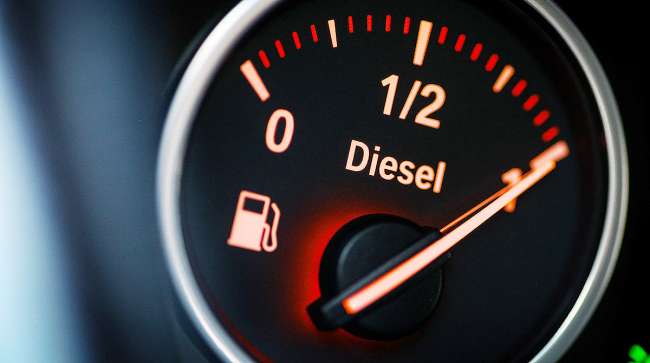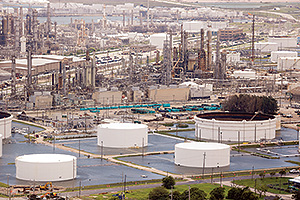Senior Reporter
Diesel Drops 1.2¢ to $3.151 a Gallon

The U.S. average retail price of diesel dropped 1.2 cents to $3.151 a gallon, the Department of Energy reported. Concerns over both demand and supply pushed oil below $59 a barrel, a level not seen since mid-March.
Diesel costs 13.7 cents less than it did a year ago, DOE said May 28, following the Memorial Day national holiday.
Regional diesel prices fell everywhere across the nation. But the California price was the highest at $4.134. The Gulf Coast region posted the lowest price, $2.893.
U.S. average #diesel fuel price on 5/27/2019 was $3.151/gal, DOWN 1.2¢/gallon from 5/20/19, DOWN 13.7¢/gallon from year ago https://t.co/JZJmNJ4nyC #truckers #shippers #fuelprices pic.twitter.com/LqdN9mK3Wb
— EIA (@EIAgov) May 29, 2019
Also, the national average price for regular gasoline fell 3 cents to $2.822 a gallon, DOE’s Energy Information Administration said.
The national average is 14 cents lower than a year ago, EIA said.
Regional gasoline prices fell in all areas. The Gulf Coast price fell the most, 4.4 cents to $2.473.
Retail gasoline prices vary significantly across the United States because of regional supply and demand balances, gasoline specification requirements, and taxes, according to EIA.
Gasoline production decreased for the week ending May 24, averaging 9.9 million barrels per day. Distillate fuel production, which includes diesel, decreased, averaging 5.2 million barrels per day.
U.S. average #diesel fuel price on 5/27/2019 was $3.151/gal, DOWN 1.2¢/gallon from 5/20/19, DOWN 13.7¢/gallon from year ago https://t.co/JZJmNJ4nyC #truckers #shippers #fuelprices pic.twitter.com/LqdN9mK3Wb — EIA (@EIAgov) May 29, 2019
One analyst cited flooding in the central U.S. as a key factor on diesel prices.
“Domestically, the biggest hit to diesel demand is the [recent] rain,” said Phil Flynn, an oil analyst with the Price Futures Group of Chicago.
“Farmers can’t get in the field. They are way behind on planting. They have planted at the slowest rate in history, right. So the demand for that oil really is behind schedule, if you know what I mean. That, short-term, means weaker demand,” he said.
Bloomberg News also reported supply risks from the Middle East to the U.S. Great Plains overwhelmed concerns that trade tensions will swamp energy demand, as flooding across the central U.S. posed potential disruptions to crude and refined product flows.
West Texas Intermediate crude futures on the New York Mercantile Exchange closed at $58.84 on May 28 compared with $63.10 per barrel May 20.
Flynn said the recent correction in crude prices was probably too much too soon compared with the typical post-Memorial Day correction of about $10 a barrel. “So I think we probably may have hit the bottom.”
As for demand for diesel going forward, he said, “our expectation is it is going to perk up and we still have the maritime regulations [requiring cargo shipping and cruise lines to switch to ultra-low sulfur fuel] down the road, which I think will tighten [supply].”
Meanwhile, the U.S. hurricane season runs June 1-Nov. 30. Hurricanes have the potential to disrupt the production and supply of oil and refined products. The National Oceanic and Atmospheric Administration, a unit of the Department of Commerce, predicted a near-normal Atlantic hurricane season is most likely this year.
NOAA’s latest outlook is for overall seasonal activity, and is not a landfall forecast.
For 2019, it cited a likely range of nine to 15 named storms (winds of 39 mph or higher), of which four to eight could become hurricanes (winds of 74 mph or higher), including two to four major hurricanes — category 3, 4 or 5 (with winds of 111 mph or higher).

Rainwater from Hurricane Harvey surrounds oil refinery storage tanks in Texas City, Texas, in 2017. (Luke Sharrett/Bloomberg)
NOAA reported the 2019 hurricane season marks the first time NOAA’s fleet of Earth-observing satellites includes three operational next-generation satellites. Unique and valuable data from these satellites feed the hurricane forecast models used by forecasters to help users make critical decisions days in advance.
Hurricanes smashed into the Gulf Coast region in 2017, causing major outages of refinery production and other problems, with the most devastating being Hurricane Harvey that hovered over Houston. Hurricane Irma laid waste to Florida, disrupting fuel deliveries to ports there.
Hurricane Maria savaged Puerto Rico, while Hurricane Nate arrived along the Gulf Coast late in the season, bringing flooding, power outages and structural damage.
Oil production in the Gulf of Mexico is playing a larger role now.
EIA reported U.S. crude oil production doubled between 2010 and 2018, with about 70% of that growth coming from the Gulf Coast region.
U.S. Gulf Coast crude oil production grew from 5.2 million barrels per day in 2014 to 7.1 million barrels a day in 2018, driven by production in the Permian Basin in western Texas and southeastern New Mexico.




